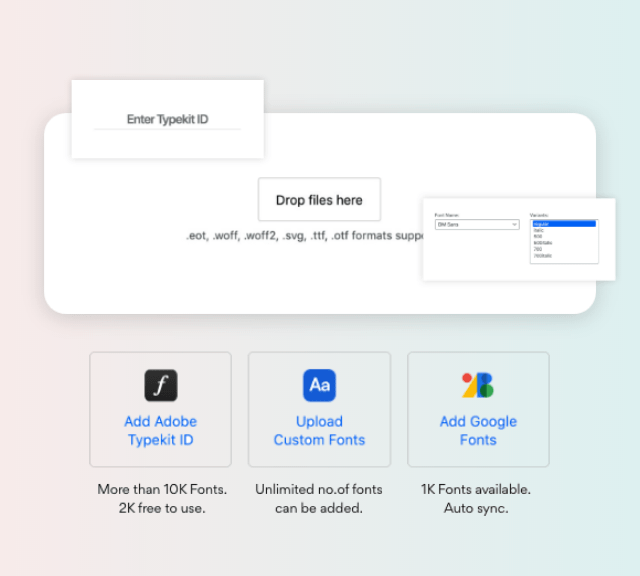Content
Given this, there is currently scope for regulatory arbitrage, and there is a danger that risks grow rapidly before an internationally agreed framework is in place. The FPC considers that financial institutions should take an especially cautious and prudent approach to any adoption of these assets until such a regime is in place. Section 3 of this report sets out an initial view of how the risks could propagate https://www.tokenexus.com/bitcoin-future-development-are-there-any-prospects-or-not/ through the key channels the FPC has identified. Section 4 outlines the FPC’s approach to monitoring risks in the cryptoassets and DeFi, and how this will evolve as these markets develop. Section 5 summarises the FPC’s view of risks, and sets out the need for regulatory frameworks to keep pace with market developments. Section 6 outlines existing regulatory initiatives related to the cryptoassets and DeFi.
The Bank is working with HM Treasury and the FCA on the development of a new FMI Sandbox, which would allow firms to experiment with technologies such as DLT in the provision of FMI services. Innovation in cryptoassets and the technology underpinning them could bring a number of benefits. Like most things in life, you bring out something new to the market and it’s not long before it’s copied, and this was the same for Bitcoin. In 2011, rival cryptocurrencies started to emerge into the market, with Litecoin, Namecoin and Swiftcoin to name a few all making their debut. This is not surprising considering the market value as of today for the Bitcoin currency is a whopping $44 billion. Because of this, there are new cryptocurrencies being created every single day by Software Developers worldwide, all hoping to become the next Bitcoin star.
Implications of blockchain for auditors
The FPC also welcomes the statement issued by the FCA reminding firms of key existing obligations when interacting with or exposed to cryptoassets and related services, given the risks they present to both market integrity and consumers. Cryptoasset markets are currently small, and there is limited interconnectedness with the traditional financial system. However, as the FPC has noted, risks to financial stability will increase as cryptoassets and DeFi continue to grow, especially at the pace seen in recent years and as they become more connected to systemic financial institutions and markets.
- Without global coordination, even comprehensive local laws will do little to prevent cross-border regulatory arbitrage and the potential abuses.
- Cryptoassets are borderless and can be transferred among users living in different countries at the same high speed.
- Despite a difficult last year, Bitcoin has started 2023 off with a bang, with a 40% increase in the past 30 days, according to CoinGecko.
- More complex investment strategies are beginning to emerge, including crypto futures and other derivativesfootnote [4].
During our stay I had promised my wife not to follow the news in these areas. Despite their inherent present volatility, cryptocurrencies have shown a unique ability to adapt and survive such setbacks, and it is likely that this will continue to be the case for years to come. Also, there is a possible transition from PoW (Proof of Work) to PoS (Proof of Stake).
The Evolution of Cryptocurrency
Whilst Bitcoin is certainly the most widely known cryptocurrency for now, other coins are also paving the way for new changes and developments in the operation and use of cryptocurrencies and the underlying technology with significant impact. The bitcoin mining activity indeed consumes a lot of computing power, and these systems need a cool place for storing the data. Thus, there are environmental consequences due to an increase in bitcoin mining activity.
Is there a future of Bitcoin?
As with any market, the future direction of Bitcoin and other cryptocurrencies is difficult to predict. However, the impact of rising interest rates and inflation concerns will remain significant factors to watch in the coming months.
Bitcoin, the digital currency underpinned by blockchain, has become one of the most talked about and media-exposed subjects in the technology space. Greater momentum surrounding crypto regulation and legislation will ultimately strengthen the shift, potentially spurring renewed levels of innovation throughout the space. An open, progressive approach towards technological innovation could provide a rising tide that lifts participants across the industry. The shifting attitudes of major financial actors, combined with the launches of multiple bitcoin exchange traded funds and the sustained growth of institution-grade funds like Grayscale highlight that a new financial era is coming. These trends described in this blog will help aid companies and organizations use the technology to its full potential to improve and streamline their operations, reduce costs, increase efficiency and boost security. This is mainly for providers in the DEFI system and other necessary services that require verification.
What are the advantages of Bitcoin over existing currencies?
A key difference between DeFi lending and market-based lending is what happens if the collateral value falls below the minimum required level (Figure A). In traditional market-based borrowing, this would result in a ‘margin call’ – a request to the borrower for additional funds to fulfil the collateral requirement. In DeFi lending, a fall in collateral value below the required level usually triggers the liquidation of the collateral. These liquidation events are most likely to occur when cryptoasset prices fall, and so have the potential to procyclically amplify selling behaviour in a market stress. And in the event of a sudden very large fall in the value of the collateral, it may not always be possible to liquidate the collateral in order to repay the full value of the loan. The existing regulatory framework, with some adjustment, can sufficiently mitigate certain risks, such as the risk of financial losses to banks.
While the FCA have primary responsibility for these risks, they nonetheless have the potential to pose indirect risks to UK financial stability through their impact on confidence (see Box B). If undertaken within a well-designed and proportionate regulatory regime, this technology could increase competition in the UK financial system, further lowering costs to end-users. A number of cryptoasset models have emerged that hold backing assets intended to stabilise their value against existing national fiat currencies or other assets. As described in Section 3.3, if appropriately designed, stablecoins could offer lower cost, real-time payments services, while also maintaining a reliable store of value.
The risks and rewards of trading penny stocks
When the payments network PayPal announced that it would enable people to store BTC in their PayPal wallets, Bitcoin hit the headlines with a vengeance, giving many would-be investors the push they needed to add BTC to their portfolios. The fact that Bitcoin was gaining real-world applications countered worries that it was too impractical to rival fiat currency. Investing in crypto comes with all kinds of risks, some of which you might not even have thought of. For example, even getting your money out of crypto and back into your bank account as cash is risky and tax may be payable on any gains that you have made. In 2022, crypto lender, Celsius, filed for bankruptcy and owed its users $4.7 billion, meaning many investors could not get their money out and did not get anything back. Whereas central banks – like the Bank of England – issue and oversee the money we use daily, cryptos are developed and run by groups, individuals or companies.
- Publicly available information about some of these groups/individuals can be vague, and, as crypto activity is not regulated yet in the UK, there is no safety net if things go wrong.
- The bulk of these assets have no intrinsic value and are vulnerable to major price corrections.
- New protocols such as Polkadot, Cosmos, Wanchain and others are now providing fast connectivity of different
blockchains with trouble-free interaction. - Despite its being somewhat dated when it comes to technical particulars, but the time the likes of Ethereum and Cardano arrived on the scene, BTC simply held too strong a position as the market leader.
- Around 75% of cryptoasset trading on centralised exchanges involves a stablecoin, which are intended to act as a stable store of value relative to fiat currency and other assets.
- “Cryptocurrency will achieve greater financial inclusion for people in developing countries,” he says.
The simplest form of connections are direct exposures, people or institutions holding cryptoassets for speculative purposes. As a large proportion of this activity is still being carried out outside the traditional financial sector, regulators have a limited line of sight into who is holding these assets. It is clear, however, that there are https://www.tokenexus.com/ a large number of retail investors in this space –FCA survey research estimates 2.3 million adults own cryptoassets in the UK alonefootnote [6]. However, the possible losses to retail investors, while raising, as I have said, investor protection concerns, is currently unlikely by itself to be large enough to be a financial stability risk.
Technical Analysis Of Bitcoin’s Price Movements
For example the cross-regulator Cryptoassets Taskforce in the UK, the President’s Working Group on Financial Markets in the US and the proposal for a regulation on Markets in Crypto-assets (MiCA) in the EU. The guidance also clarifies the high standards the ‘coin’ must meet if it is to settle payments. By contrast, the collapse of the $1.2 trillion market in sub-prime mortgage backed securities in 2008 triggered the great financial crisis.








































